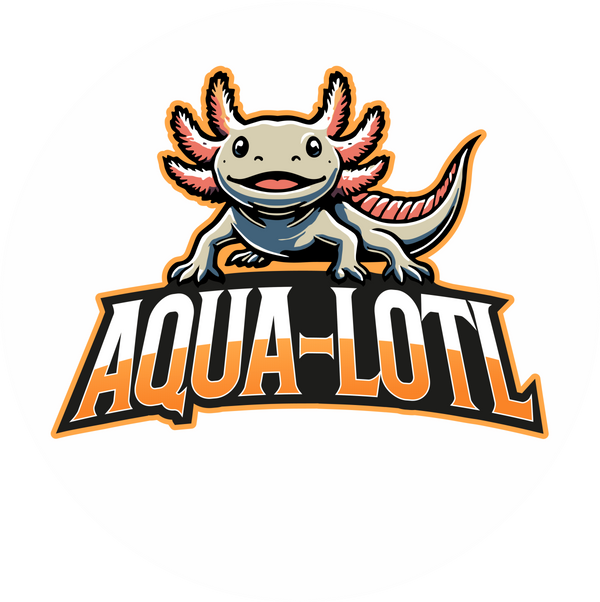Top 5 Mistakes New Axolotl Owners Make (And How to Avoid Them)
Share
Bringing home your first axolotl is exciting — but if you're not fully prepared, it's easy to make mistakes that can seriously affect your pet's health and lifespan.

At Aqua-Lotl, we’ve helped hundreds of new owners avoid these pitfalls. Here are the top 5 most common mistakes first-time axolotl owners make, and how you can avoid them to give your axolotl the best start possible.
❌ 1. Skipping the Tank Cycling Process
This is the #1 most dangerous mistake new owners make.
Adding an axolotl to a brand-new tank before completing the nitrogen cycle exposes it to toxic ammonia and nitrite — which can burn its gills, cause illness, and even lead to death.
Fix it:
Learn how to safely cycle your axolotl tank before adding your pet. We recommend the fishless cycling method with bottled ammonia and regular water testing.
🧪 Read our full guide: [How to Cycle an Axolotl Tank]
❌ 2. Using the Wrong Substrate
Many pet stores recommend gravel or colorful pebbles — but these can be deadly for axolotls.
Axolotls often swallow substrate while hunting, and small stones can cause intestinal blockages, leading to serious injury or death.
Fix it:
Use a bare-bottom tank for baby axolotls
For adults (5 inches or larger), use fine aquarium sand
You can also use aquarium tile for easy cleaning and safety
Avoid gravel, marbles, or any pebbles small enough to be swallowed.
❌ 3. Keeping Axolotls With Fish or Incompatible Tankmates
Axolotls are not community tank animals — and keeping them with fish can lead to trouble fast.
Fish often nip at axolotl gills, and axolotls may eat fish whole, choking or getting internal damage.
Even other axolotls can be aggressive if they are mismatched in size or sex.
Fix it:
Keep axolotls alone or with similarly sized, same-sex tankmates
Never house axolotls with fish, snails, shrimp, or tropical species
❌ 4. Overfeeding or Using the Wrong Foods
Feeding your axolotl too much — or feeding the wrong things — can cause:
Dirty water
Constipation
Impaction
Malnutrition
Some owners mistakenly offer chunks that are too big, feeder fish, or low-nutrition pellets.
Fix it:
Feed age-appropriate, high-quality foods:
Earthworms (best choice)
Axolotl pellets (sinking, soft)
Blackworms or Repashy Grub Pie
Avoid: goldfish, live feeder fish, and anything larger than your axolotl's head.
🐛 See our full [Axolotl Feeding Guide]
❌ 5. Letting the Water Get Too Warm
Axolotls are cold-water amphibians. Temperatures above 70°F (21°C) can cause stress, immune system failure, and even death.
Summer heat waves, closed tanks, and indoor heaters are common causes of overheating.
Fix it:
Keep your water between 60–65°F
Use a small fan blowing across the water to cool it down
Float frozen water bottles during hot days
Never use a heater unless you're treating illness with temperature adjustments (and only under guidance)
✅ Final Tip: Take Your Time
The biggest mistake of all? Rushing.
Take time to:
Cycle your tank
Test your water regularly
Research proper food and care
Set up the correct tank gear (filter, substrate, thermometer, test kit)
A prepared tank = a healthy axolotl.
🐾 Want Help Getting Started?
At Aqua-Lotl, we’re here to support every step of your axolotl journey.
Browse our [Axolotl Care Guide] or [Contact Us] directly if you have questions about your tank, water quality, or feeding routine.
